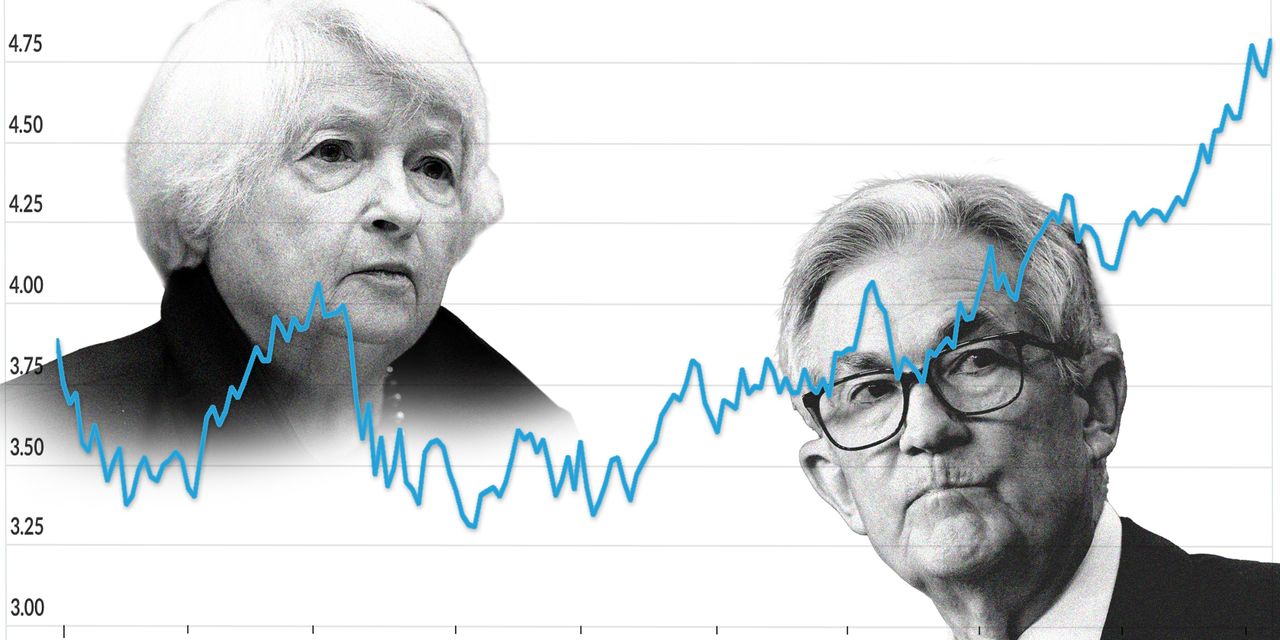Long-term bond yields have been spiking, in response to the Federal Reserve letting its bond portfolio slowly roll off as the U.S. Treasury has been selling debt to fund the government’s spending.
The move caught Wall Street and investors worldwide almost entirely by surprise. But there was a research paper that largely predicted exactly this scenario, written six years ago, to understand the Fed’s unwinding of what was then a $4.5 trillion portfolio. Now the Fed balance sheet stands at $8 trillion, having peaked around $8.9 trillion.
It was written by a University of Michigan doctoral candidate, who came up with a critical insight: The market’s ability to swallow up issuance depends on the correlation between the bond and stock markets.
“At the time, people thought it was a strange topic,” recalled Steve Hou, now a quantitative researcher for Bloomberg. He did say that some central banks including the Bank of Canada and the Cleveland Fed took notice. “The scenario which I envisioned, where we could end up a different regime where the stock-bond correlation will no long remain deeply negative, causing there to be a sharp price elasticity for bonds, seemed very far-fetched at the time.”
When the bond and stock markets move in different directions, bonds are a good hedge for stocks, making it easier for markets to soak up new Treasury supply, wrote Hou in the research paper. But when the correlation is positive — when stocks and bonds move in the same direction — bond risk premiums rise in response to an increase in the Treasury supply.
“Investors will need to be compensated for taking on additional risk that accompanies the increase in supply. Demand will be less elastic and risk premiums will need to rise more per unit of supply,” he wrote.
And that’s what has happened. The Treasury set plans to borrow $1 trillion in the July-to-September quarter, and another $852 billion in the October-to-December quarter. The yield on the 10-year Treasury
BX:TMUBMUSD10Y
spiked 75 basis points in the third quarter, and the 30-year yield
BX:TMUBMUSD30Y
rose even faster. Bond yields, which move in the opposite direction to price, were surging once again on Friday after hotter-than-expected payroll growth.
“This was always going to happen, yields were too low. And they were too low for various reasons, particularly the Damocles sword hanging over everyone, ‘what if there is a recession and yields plunge back down.’” But recent economic data have pushed recession fears much further into the future, if at all, he said.
Hou, who also was a quantitative researcher at the hedge fund AQR Capital Management, did admit to being surprised by just how much bonds have declined in value. “There are genuine structural reasons bond yields ought to be higher: inflation, geopolitical tensions, fiscal policy needs, both in terms of geopolitical competition as well as healthcare needs for the elderly,” he said. “But when people are talking about 6%, 7%, things are getting a little silly now.”
“Is it possible that we fully reverse the 40 years of disinflation, and 10-year yields trending down from when Bill Gross got in the business? It’s possible, but I am not sure we are quite there yet,” he added.
The bigger picture, he said, is that the institutions that perform the arbitrageur role — like trading desks or hedge funds — are intrinsically exposed to stock market risk. These investors must evaluate the additional durational risk of new bonds against their hedging value for stocks.
“We know who they are, they are the Pimcos and JPMorgan Chase, they are these large financial institutions with limited balance sheet capacity,” he says.
“So that’s why there’s an international linkage,” he adds, noting sovereign bond yields also are surging in Europe, even though the fundamentals for bonds are different than in the U.S. market. He said the duration risk is similar, just in different currencies.
Read the full article here













Leave a Reply